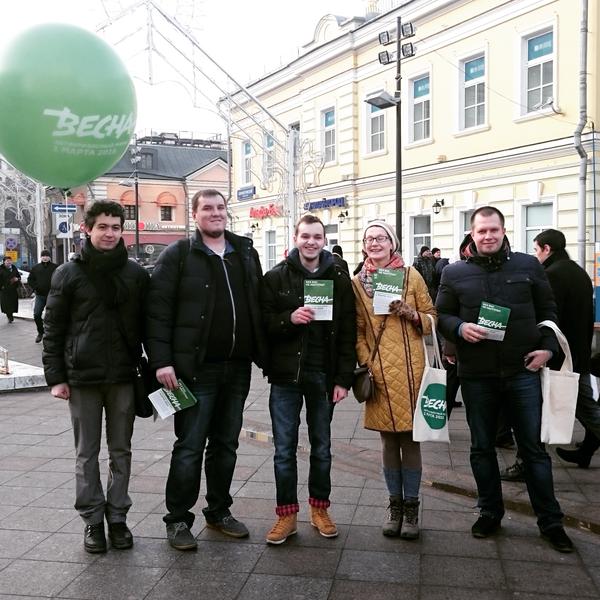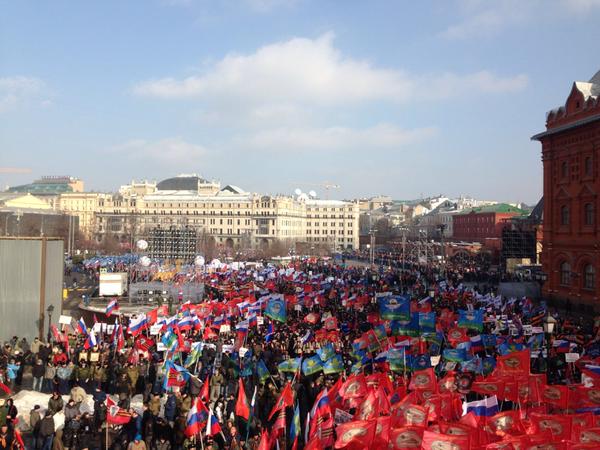This Saturday, a large rally in Moscow shook social media with pictures of endless columns of protesters sporting signs deriding the West’s “degenerate” values and Ukraine’s pro-democracy Euromaidan movement. Such a huge protest in the center of a capital calling not for change, but, rather, for absence of change, can shock a Western observer and perhaps convince him that Russian society is beyond recovery in its adoration of the ruthless dictator feared and derided by the rest of the world, even despite the economic hardships he has brought on the nation. But perhaps this is what Putin wants you to think, and the grotesque images of the “Antimaidan” rally are as much aimed at the rest of the world as at domestic viewers.
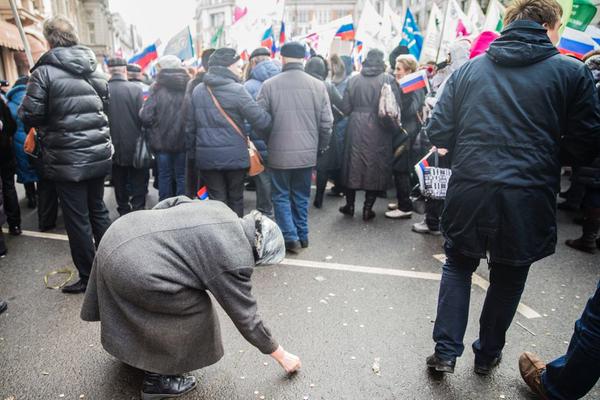
The Moscow rally was perhaps as artificial as the Russian-manufactured “civil war” in Ukraine. Numerous reports of doctors, teachers, bureaucrats and students alike forced to attend, “protesters” shuttled in by buses from across central Russia, rent-a-crowd operations exposed
by many sources in Russian independent media all explain the exact mechanism of fabricating active support of Putin and “stability”. Moreover, similar rallies held in regional capitals on the same day gathered several hundred at best, despite the regions being traditionally regarded as more conservative and supportive of the regime. Perhaps the number-bolstering techniques were limited to Moscow, which explains the failure of “genuine” Antimaidans across Russia.
Получила 300 рублей за участие в митинге Антимайдана и засняла это на видео pic.twitter.com/nQbniERzfP
— Наташа Зотова (@natashazotova) February 21, 2015
Novaya Gazeta's reporter Natasha Zotova went undercover as a rent-a-crowd protester and received her 300 rubles
The practice of such rallies, derided in Russian liberal circles as “putings” (a portmanteau of Putin and “miting” – the Russian word for “rally”), is nothing new. While forced attendance was characteristic of many Soviet “demonstrations” held on state holidays, the practice was abandoned during the early post-Soviet years and revived on a large scale during Putin’s 2012 presidential campaign. Pioneered in Yekaterinburg, it culminated with enormous rallies
at Poklonnaya and Luzhniki, gathering countless thousands of mostly forced attendees. Marked by the same anti-revolution narrative, these rallies were meant as a counterweight for the pro-democracy protests that shook Moscow that winter, the largest in the history of modern Russia.
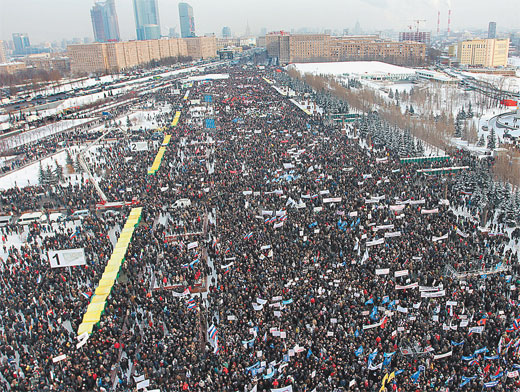
It’s interesting to note that that time the forced attendance and rent-a-crowd techniques were not limited to Moscow, with regional “putings” easily outweighting local anti-Putin rallies in some cases tenfold. Even the price of rent-a-crowd back then was as high as 500 rubles ($17 at 2012 rates), Antimaidan offered as little as 300 rubles ($5). It’s quite possible there simply aren’t enough available resources to simulate popular support, suggesting that by the time the crisis hits in full, the government will have to rely on the traditional law enforcement and what little sincere support Antimaidan can gather.
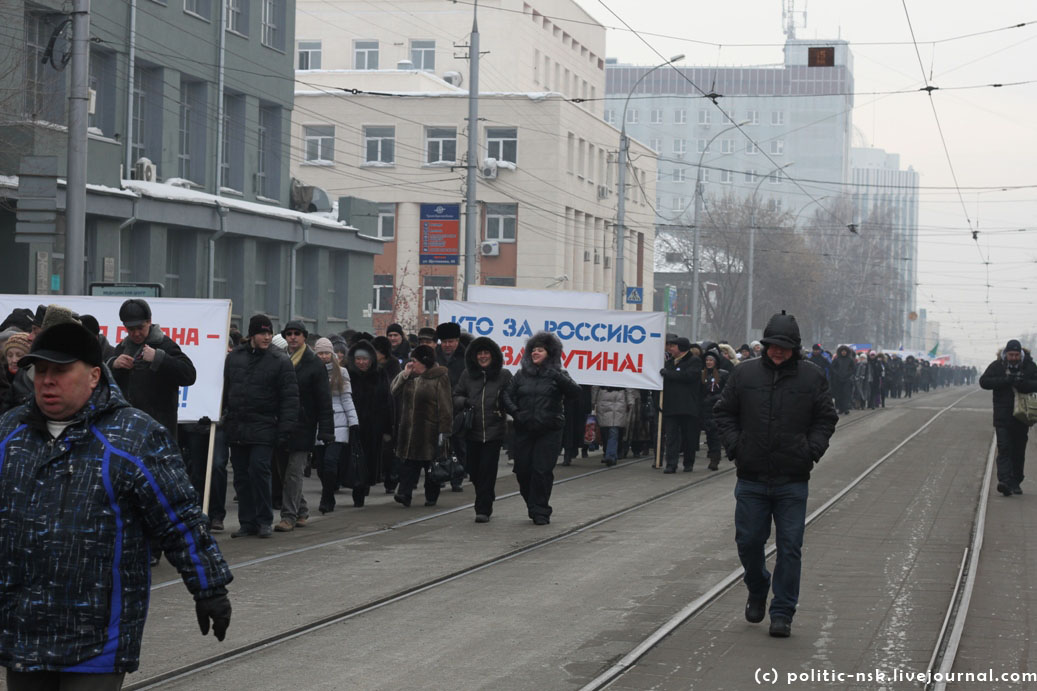
To get an understanding of how strong Antimaidan really is we could look at the “Donbas rallies”, held in Moscow several times without much government support. These rallies always gathered as few as 1000-3000, quite few compared to the 30,000-50,000 Antimaidan and the anti-war “Peace Marches” gathering willing opponents of Russian aggression in numbers similar to the latter.
From left to right: a Pro-Donbas rally, an anti-agression Peace March, the recent Antimaidan
Even if the Kremlin manages to keep up Antimaidan’s numbers, the tactics is ineffective weapon against real protesters, as shown by Ukraine’s original Antimaidan (that managed to pull off deadly attacks against Euromaidan protesters, yet dispersed and fled in the end). In an example from recent Russian history, the “Putin youth” movements nurtured by Kremlin’s string-puller Surkov in the 2000s after the first Ukrainian Maidan, failed to fulfill their main goal of stalling anti-government protests, despite arriving to Moscow in large numbers. In the end the government still had to resort to riot police, just like during the “Manezh” protest on December 29, 2014, when the nascent Antimaidan failed to overpower the protesters in central Moscow.
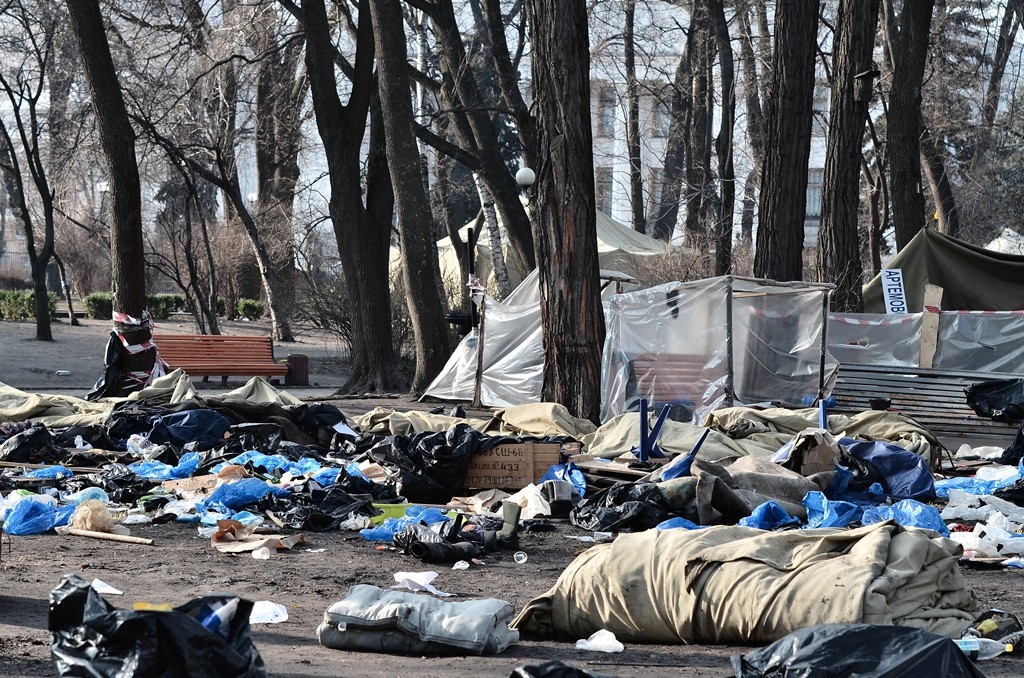
Perhaps another reason behind the Antimaidan rally is again a counterweight to the “Spring” march to be held on March 1 in an outlying Moscow district of Maryino. Although the protesters don’t intend to turn the rally to a Maidan copycat, they are still demanding for Putin to resign due to his aggressive policies and mishandling the economy leading Russia to a deepening crisis. While the ostensible failure of the 2011-2012 protest movement to change things in Russia led to protesters’ numbers increasingly dwindling, the crisis may spark a new life to the protest movement and the “Spring March” could easily surpass Antimaidan’s numbers. Don’t let the fake rallies fool you, wait for the sincerely concerned Russians to speak their mind on the streets of Moscow.
